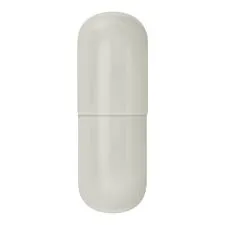
Oct . 12, 2024 23:49 Back to list
hpmc for wall putty
The Role of HPMC in Wall Putty Applications
Hydroxypropyl Methylcellulose (HPMC) is a versatile cellulose derivative that plays a crucial role in various construction materials, including wall putty. Its unique properties make it an indispensable ingredient in enhancing the performance and effectiveness of wall putty formulations. This article explores the significance of HPMC in wall putty applications, its benefits, and the reasons for its widespread use in the construction industry.
Understanding Wall Putty
Wall putty is a white cement-based product used for preparing smooth surfaces on internal and external walls before painting. It serves as a preparatory layer that fills cracks and imperfections, ensuring a flawless finish. The quality of wall putty significantly affects the final appearance of painted surfaces, making it essential for contractors and builders to use high-performance materials.
Importance of HPMC
One of the most critical roles of HPMC in wall putty is its ability to improve workability. HPMC enhances the viscosity of the putty mixture, allowing for easy application and improved adherence to wall surfaces. This is particularly crucial during the application process, as it enables workers to achieve a smooth, even coat without the mixture running or sagging.
hpmc for wall putty

Moreover, HPMC contributes to the water retention capacity of wall putty. This property ensures the mixture remains workable for extended periods, allowing builders to apply it at their own pace without compromising on quality. The water retention capability also aids in preventing cracks and defects as the putty dries, leading to a more durable finish.
Enhanced Performance
Adding HPMC to wall putty not only improves workability but also enhances the overall performance of the material. It provides excellent adhesion to a variety of substrates, including concrete, gypsum, and masonry. This versatility makes HPMC a preferred choice among builders and manufacturers, as it allows for its use in diverse construction scenarios.
Another significant advantage of HPMC is its influence on the drying time of wall putty. By regulating moisture evaporation, HPMC enables the putty to dry gradually and uniformly, reducing the risk of shrinkage cracks and ensuring a long-lasting finish. This characteristic is particularly beneficial in climates with fluctuating humidity levels.
Conclusion
In conclusion, Hydroxypropyl Methylcellulose (HPMC) is an essential additive in wall putty formulations, providing critical advantages in workability, water retention, adhesion, and drying characteristics. As the construction industry continues to evolve, the demand for high-quality materials that support efficient and effective application will only grow. HPMC stands out as a key component that meets these requirements, reinforcing its position as a vital ingredient that enhances the quality and performance of wall putty. Therefore, for builders and contractors aiming to achieve superior results in wall finishing, HPMC-based wall putty is undoubtedly the way forward.
-
Versatile Hpmc Uses in Different Industries
NewsJun.19,2025
-
Redispersible Powder's Role in Enhancing Durability of Construction Products
NewsJun.19,2025
-
Hydroxyethyl Cellulose Applications Driving Green Industrial Processes
NewsJun.19,2025
-
Exploring Different Redispersible Polymer Powder
NewsJun.19,2025
-
Choosing the Right Mortar Bonding Agent
NewsJun.19,2025
-
Applications and Significance of China Hpmc in Modern Industries
NewsJun.19,2025







